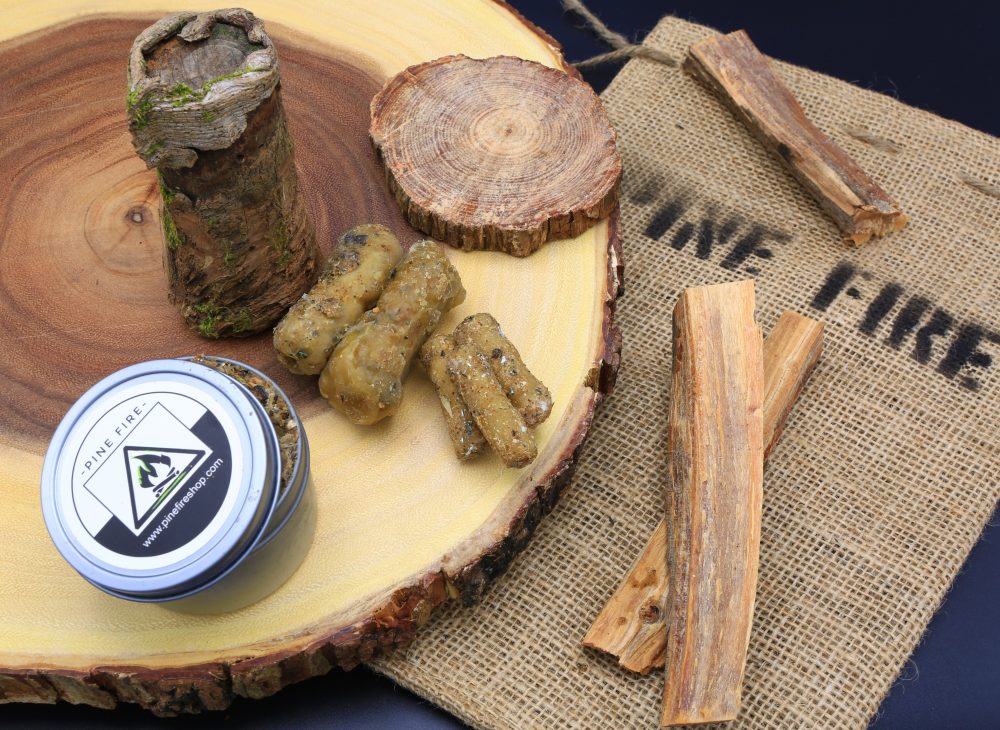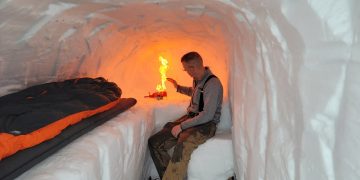When it comes to wilderness survival, most people know the basics—how to make a fire, build a shelter, find food and water. But what if I told you there are lesser-known hacks that can make your survival experience significantly easier and more efficient? These innovative tips often don’t make the headlines but can be life-saving in critical situations. In this article, we’ll explore some of the best wilderness survival hacks you’ve probably never heard of. They range from practical to ingenious, and will equip you with new skills for the next time you venture into the wild.
1. The Ultimate Natural Firestarter: Pine Resin + Cotton
Starting a fire is one of the top priorities in any survival situation. While most people carry a lighter or waterproof matches, you can easily create a fire starter using pine resin and cotton. Pine resin is highly flammable, and when mixed with cotton (like from your shirt or a cotton ball), it creates a highly effective and long-lasting fire starter.
How it works: Pine resin sticks to the cotton, allowing it to burn longer and hotter. The sticky resin also acts as a binder, allowing the cotton to catch fire easily. This combination can burn even when wet, making it incredibly useful in rainy conditions.
Pro Tip: Keep a small container of resin in your survival kit. It’s lightweight, easy to carry, and can save you valuable time when trying to start a fire under challenging conditions.
2. Build a Shelter with Tarp and Paracord (No Trees Needed)
If you’re in an area without trees, building a shelter can be more difficult. However, with a tarp and paracord, you can create a functional shelter almost anywhere. The tarp will protect you from the elements, while paracord can be used to secure it.
How it works: You don’t need trees to set up this shelter. Simply anchor the paracord to the ground using rocks or heavy objects, stretch out the tarp, and tie it off. This setup can create a quick, waterproof shelter that will keep you warm and dry.
Pro Tip: If you’re in an area with little vegetation, find large rocks, logs, or other objects to use as anchors for the paracord. You can even use your gear, like your backpack, to anchor the lines.
3. Use a Solar-Powered Battery Charger (Even Without Full Sunlight)
In today’s world, many survival situations also involve staying connected. Whether it’s for navigation, communication, or emergency signaling, having a reliable power source for your devices is crucial. Solar-powered battery chargers are often overlooked but can be lifesavers, even in less-than-ideal conditions.
How it works: Solar chargers work by converting sunlight into electrical energy to charge your devices. The technology has evolved to the point where solar chargers can still work effectively in partial sunlight. Many modern solar chargers are compact and lightweight, making them easy to carry in your pack.
Pro Tip: Look for a charger with a built-in power bank. This ensures you have backup power even when the sun isn’t shining.

4. Create a Water Filter Using a Plastic Bottle
Having access to clean water is one of the most crucial aspects of wilderness survival. While you may not have a high-tech water filtration system, you can create a makeshift filter using materials found in nature.
How it works: You can create a simple yet effective water filter by filling a plastic bottle with layers of sand, charcoal, and gravel. The charcoal acts as a purifier, while the sand and gravel filter out larger particles and debris. This can significantly improve the quality of contaminated water.
Pro Tip: Boil the filtered water to kill any bacteria or pathogens, ensuring it’s safe to drink.
5. Use a Tinfoil Reflector for Signaling and Heat
In emergencies, signaling for help is one of the most important survival tactics. If you’re stranded in the wilderness, a simple piece of tinfoil can save your life. A small sheet of aluminum foil can be used as a reflective surface to signal for help or to warm your shelter.
How it works: You can fashion the tinfoil into a reflector to direct sunlight toward a specific area. If you need to get someone’s attention from a distance, this technique can be especially effective when combined with signaling mirrors or loud sounds.
Pro Tip: Keep a small piece of tinfoil in your kit—it’s lightweight and takes up almost no space but can be a crucial signaling tool.
6. Use Animal Tracks to Find Water
Understanding the behavior of animals can be a vital skill when you’re navigating through the wilderness. Animals need water just like humans, so following their tracks can lead you to a water source.
How it works: Animals will often travel to known water sources in the wild. By tracking animals, you can use their paths to guide you to streams, rivers, or ponds. Look for fresh tracks in soft ground, and head in the direction they seem to be going.
Pro Tip: Be mindful of animal tracks as they may indicate potential dangers, like predators, in the area. Always stay alert.
7. Use A Survival Blanket as a Multi-Purpose Tool
Survival blankets, also known as Mylar blankets, are incredibly lightweight, but they pack a punch when it comes to functionality. These reflective blankets can help you retain heat, signal for help, or even act as a temporary shelter.
How it works: The reflective material in the survival blanket reflects your body heat, which helps to retain warmth in cold weather. It can also be used to create a makeshift shelter by draping it over branches or tying it to a structure you’ve built with your paracord.
Pro Tip: Use the survival blanket as a ground cover to insulate yourself from the cold ground. This simple trick can add hours of warmth during the night.

8. Use Your Clothes for Extra Insulation
It may seem obvious, but many people overlook how much insulation they can get from their own clothes in a pinch. When the weather turns cold, layering is your best defense against hypothermia, but you can also get creative with your gear.
How it works: If you’re carrying extra items like a scarf, socks, or even your backpack, you can use them to create extra insulation. For example, stuffing your backpack with leaves or other materials can turn it into an effective makeshift pillow and insulation pad.
Pro Tip: When you’re cold, focus on warming your core. Use your clothes to insulate your torso and legs first. If you’re still cold, use your clothes to create a cocoon around your entire body for maximum warmth.
9. Improvised Fishing Gear from Everyday Objects
While fishing can be an essential skill for acquiring food, you don’t need fancy gear to catch fish. With a little creativity, you can make an effective fishing rod from items you already have in your survival kit.
How it works: You can use your paracord as fishing line, attach hooks made from safety pins or wire, and fashion a rod out of a sturdy branch. For bait, you can use bugs, small animals, or even plant-based materials like seeds or berries.
Pro Tip: Practice casting and fishing in a controlled environment before heading into the wild. This will improve your chances of success when you’re in an actual survival situation.
10. The Power of Duct Tape: More Than Just a Repair Tool
Duct tape is known for its versatility, but did you know it can serve a variety of purposes in the wilderness? From making repairs to creating a makeshift first aid kit, duct tape can solve many problems when you’re in a bind.
How it works: Duct tape can be used to seal wounds, patch up torn clothing, or even create a makeshift splint for a broken limb. Its waterproof nature makes it perfect for emergency repairs in wet conditions.
Pro Tip: Carry a small, compact roll of duct tape in your survival kit. A few strips can go a long way in a survival situation.
Conclusion: Ready to Conquer the Wilderness?
Survival in the wild isn’t about having the most expensive gear or the most advanced knowledge—it’s about resourcefulness and creativity. These lesser-known survival hacks can help you overcome challenges that most people don’t anticipate when venturing into the wilderness. The key to survival is thinking outside the box, and with these hacks, you’ll be better prepared to handle whatever nature throws your way.























